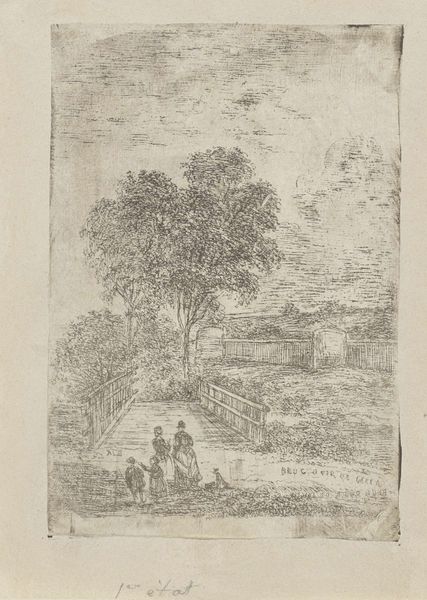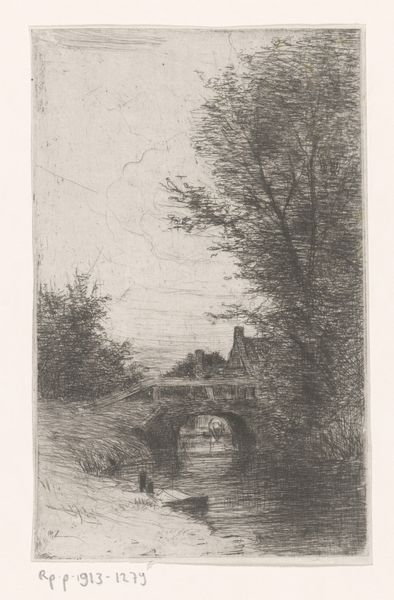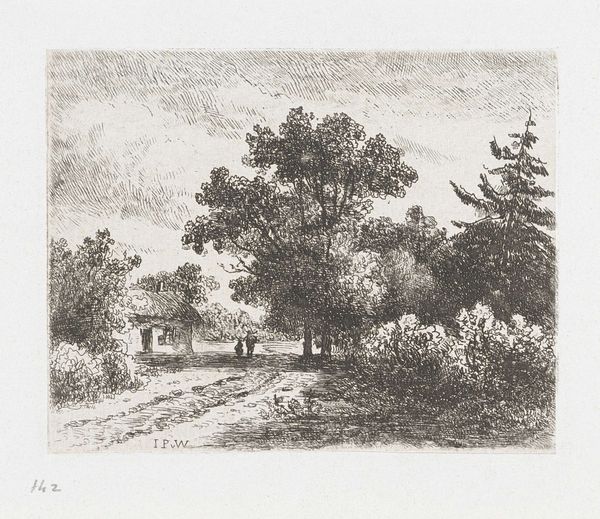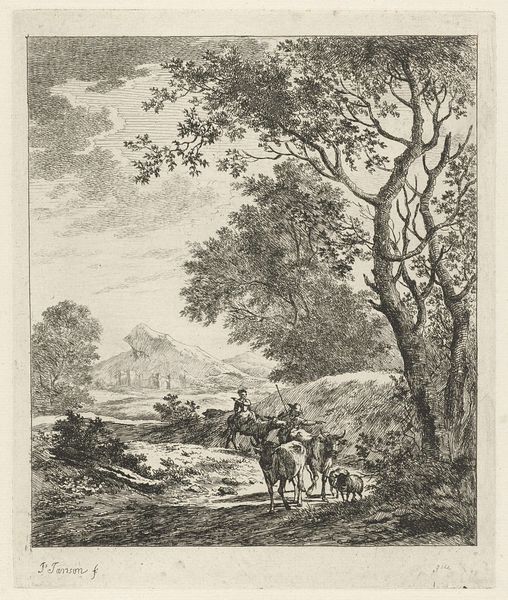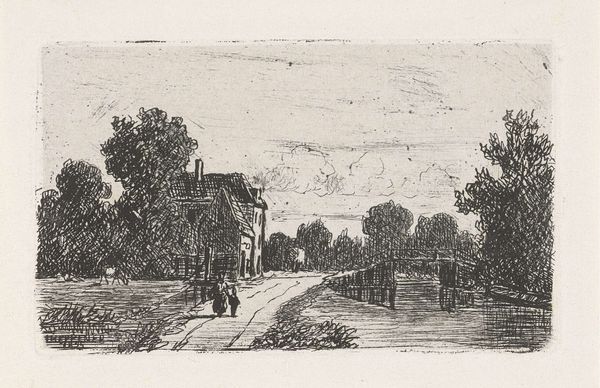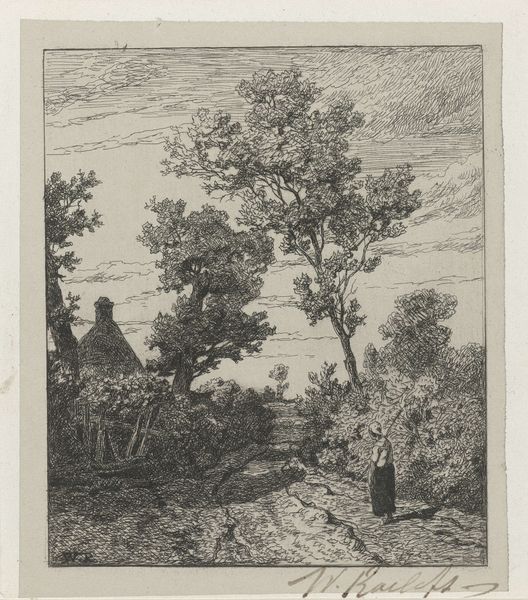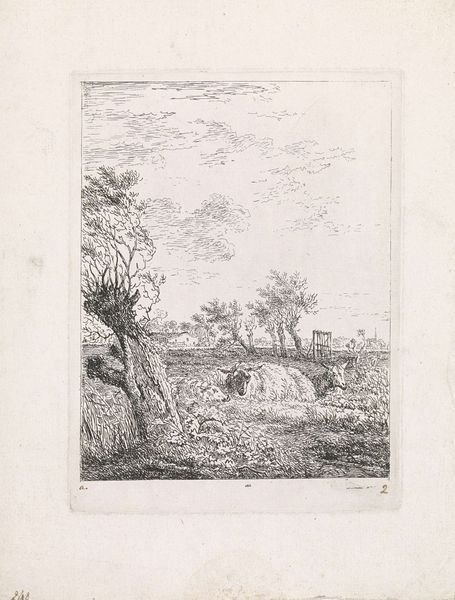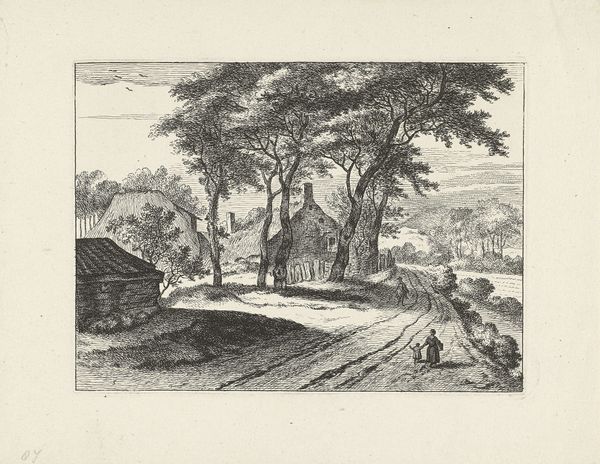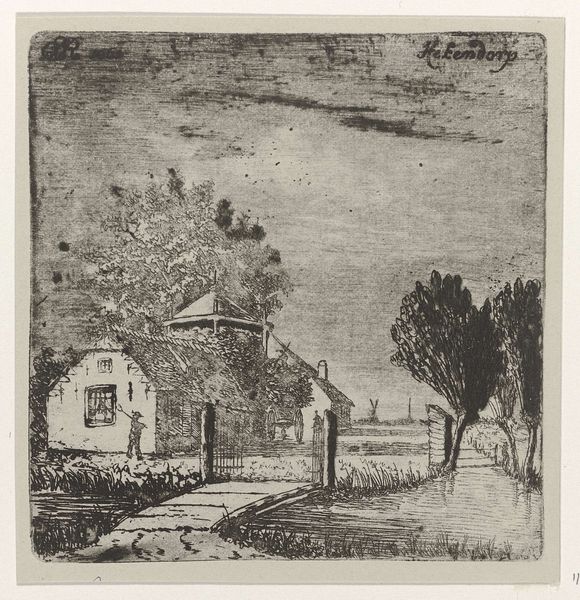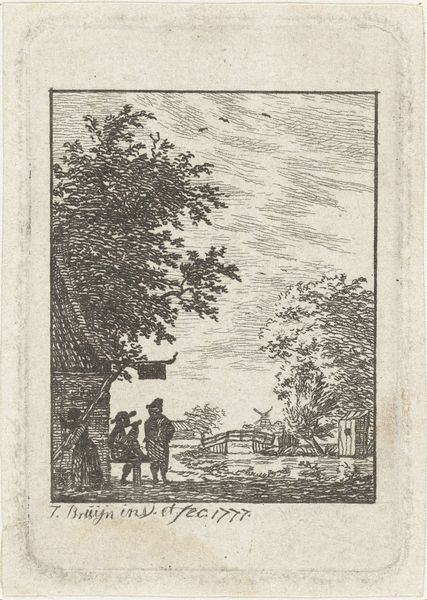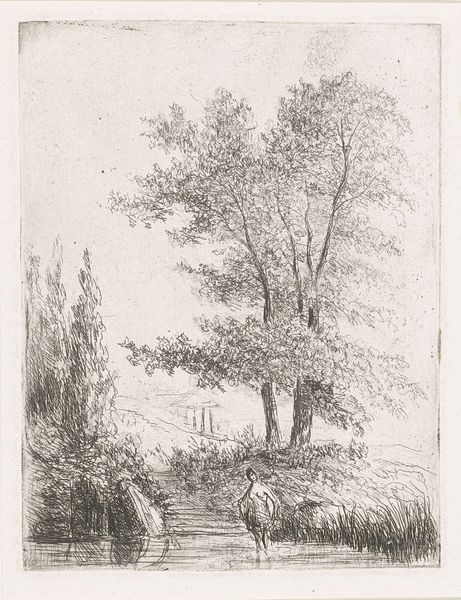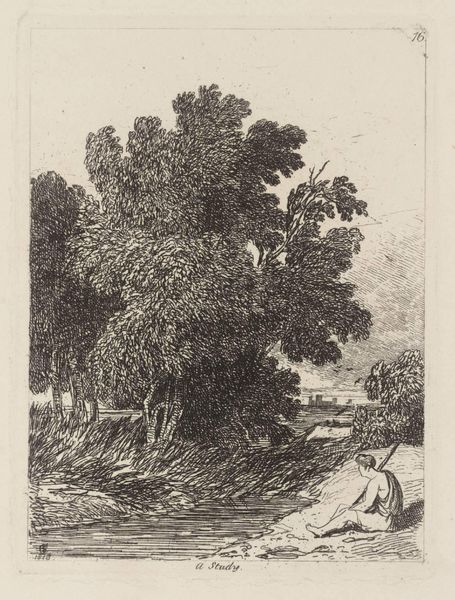
drawing, paper, ink
#
drawing
#
landscape
#
river
#
paper
#
ink
#
realism
Dimensions: height 154 mm, width 103 mm
Copyright: Rijks Museum: Open Domain
Curator: This drawing, held at the Rijksmuseum, is entitled "Brug over De Jeker in Maastricht," or "Bridge over the Jeker in Maastricht". It was created by Alexander Schaepkens sometime between 1830 and 1899 using ink on paper. Editor: There's a tranquility here. The almost skeletal rendering of the trees and the wispy clouds give a dreamlike quality to this everyday scene. Even the people seem frozen, like figures from a half-remembered memory. Curator: Schaepkens, while known for his paintings, frequently used drawing to document local scenes. This piece showcases the bridge over the Jeker River in Maastricht, Netherlands, a region undergoing significant urban development in the 19th century. Editor: Water imagery is often associated with the unconscious and flowing change. Coupled with the bridge as a symbolic link, one might interpret the drawing as representing Maastricht's own transition from one state to another, bridged by this image of tranquil rural life. Note too that while they're crossing the bridge, their gaze leads to what's ahead instead of focusing on crossing the bridge, as they already know their way across. Curator: I think you're right. While at first glance, the work might just seem like a straightforward landscape, the careful rendering does lend the piece deeper significance, hinting at the social changes bubbling under the surface of a seemingly quaint scene. It certainly places these ordinary figures into the long line of Dutch painting as they come together for the daily passeggiata! Editor: Absolutely, Schaepkens captures not only the literal landscape but also the symbolic landscape of a city in flux. Looking closely at the image, you begin to discern the old next to the modern structures of his time, while still being represented within a rural area, on a smaller human scale. The clouds are no longer heavy of emotion but gentle and promising to create new weather. Curator: A delicate balance between preservation and progress then, it seems. This piece really illuminates that dynamic, a perfect snapshot of its era. Editor: Indeed. A bridge to both physical locations and perhaps, an ideological shift. It invites us to ponder how societies navigate those crossings.
Comments
No comments
Be the first to comment and join the conversation on the ultimate creative platform.
